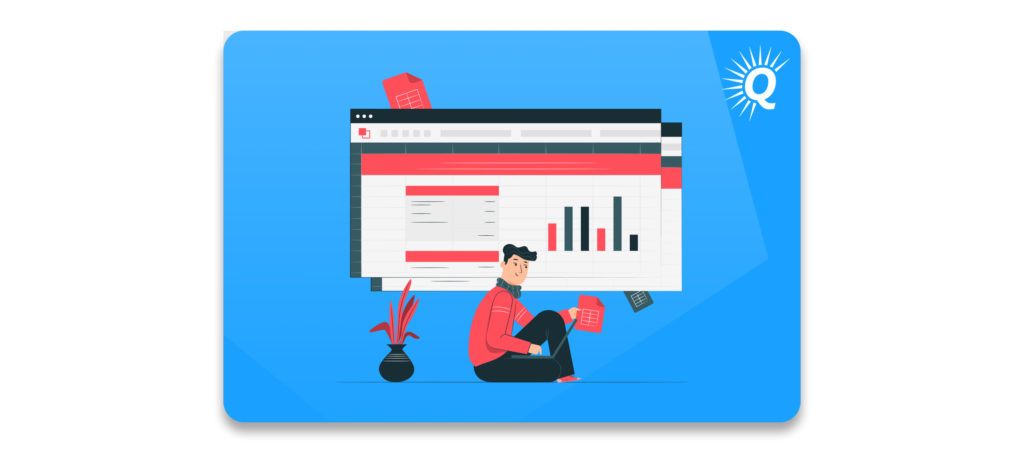Topics:
Never Miss a Beat - Get Updates Direct to Your Inbox
FILTER:


Key Amazon Business Metrics Every Seller Should Pay Attention To
By Quiet Light
As an Amazon business owner, you want to be able to run your business as effectively and efficiently as possible. While there are many aspects involved in becoming a successful Amazon seller, tracking your key Amazon business metrics lies near the top of the list.


In this article, we will explore the key Amazon business metrics every owner should be paying attention to. We’ll also discuss why these metrics are critical for your business’s success.
Key Amazon Business Metrics
Fortunately for you, Amazon makes it easy to access loads of information right from your Seller Central account. While access to business data is a good thing, you also must know what data to focus on, and how to interpret that data.
When it comes to Amazon seller metrics, there are several different aspects of your business’s performance to be aware of. These include:
- Fulfillment
- Inventory
- Customer Experience
- Sales and Account
Each of these categories contains one or more Key Performance Indicators (KPI) that are necessary to watch.
Fulfillment
When it comes to analyzing your fulfillment performance, key metrics to track include:
- Order Defect Rate
- Invoice Defect Rate
- Pre-Fulfillment Cancellation Rate
- Late Dispatch Rate
- Fulfillment Performance
Let’s take a closer look at each of these metrics.
Order Defect Rate
Put simply, the Order Defect Rate (ODR) is the percentage of orders that lead to a negative customer experience. Obviously, you want to keep your ODR as low as possible. If your ODR goes above 1%, Amazon may suspend your seller account.


There are three different components that determine your ODR:
- Negative Feedback Rate
- Credit Card Chargeback Rate
- A-Z Guarantee Claim Rate
In essence, ODR helps keep sellers accountable for defective inventory.
Invoice Defect Rate
The Invoice Defect Rate is a measure of how well your business delivers invoices to your Business Customers. Since Amazon Business Customers often need accurate and timely invoices, the Invoice Defect Rate is an important metric to consistently examine.
After a sale, you must provide a receipt to your Amazon Business customers within one business day. If you don’t, it could negatively impact your Invoice Defect Rate. As an Amazon Seller, your target Invoice Defect Rate is 5% or less. This means that you need to deliver your invoices to Amazon Business customers within one business day after the sale at least 95% of the time.
Pre-Fulfillment Cancellation Rate
For Amazon business owners who are fulfilling their own orders (FBM), the Pre-Fulfillment Cancellation Rate is a crucial metric to keep track of. The Pre-Fulfillment Cancellation Rate is a measure of how many orders cancel after purchase.
The most common reason for this is that the product that they purchased is out of stock. As you can imagine, this should not be an issue if you are an FBA seller. Either way, a Pre-Fulfillment Cancellation Rate below 2.5% is acceptable.
Late Dispatch Rate
This is another metric that FBM sellers should pay close attention to. The Late Dispatch Rate is a measure of the percentage of orders that are dispatched three or more days after the date they were supposed to be shipped on.


As a seller, you should aim to have a Late Dispatch Rate of under 4%. Obviously, the more often you are late to dispatch an order, the more unsatisfied customers you will have. In addition, Amazon may suspend or deactivate your account if your Late Dispatch Rate exceeds 4%.
Fulfillment Performance
While each of the above metrics helps you understand different order fulfillment aspects, Fulfillment Performance provides an overall view of how well you are fulfilling your orders. It does this by taking into account your Order Defect Rate, Late Shipment Rate, and your Pre-Fulfillment Cancellation Rate.
As an overarching measure of your fulfillment success, the Fulfillment Performance measurement is a crucial metric for Amazon Sellers to pay attention to.
Inventory
When it comes to keeping track of your inventory, there is one key metric to monitor. This is the Inventory Performance Index, or the IPI.
Inventory Performance Index
The Inventory Performance Index helps sellers understand how well they are managing their inventory. While there are many metrics that are more relevant to FBM sellers, this metric is more relevant to FBA business owners.


The IPI is assessed on four different factors analyzed over the previous three months. These four factors include:
- Excess Inventory Percentage
- Stranded Inventory Percentage
- FBA Sell Through Rate
- FBA In-Stock Rate
In short, these performance criteria are designed to help you maintain a balanced inventory, avoid long-term storage fees, keep your popular products stocked appropriately, and fix any listing problems that your product may have.
Customer Experience
As a business owner, you already know the importance of keeping your customers happy. Fortunately for you, Amazon has a range of key customer metrics that will help you track the experience of your customers in real-time. These include:
- Negative Experience Rate
- Customer Experience Health
- Buyer-Seller Contact Response Time

Negative Experience Rate
The Negative Experience Rate takes into account returns, refunds, buyer messages, and negative reviews to analyze the percentage of customers that have a negative experience for each product that you sell. The Negative Experience Rate is also known as the NCX.
Customer Experience Health
Customer Experience Health, or CX, essentially takes your NCX rate and compares it to other similar product offers within your category. The CX for each product is displayed in a color-coded format within your Seller Central Account, ranging from Very Poor to Excellent.
Buyer-Seller Contact Response Time
As a seller, the sooner that you respond to customer messages the better. Rapid responses to customer messages ensure that issues are addressed in a timely manner and help to create customer satisfaction.


The Buyer-Seller Contact Response Time, or CRT, is a metric that measures the number of messages that a seller successfully responds to within 24 hours. If you wait longer than 24 hours to respond to a customer message, your CRT will be negatively impacted.
As an entrepreneur, it can be challenging to respond to all messages within a 24 hour time period 7 days a week, 365 days per year. For this reason, many Amazon Sellers decide to hire a customer service team to take over these responsibilities for them. Whichever option you choose, be sure to stay on top of your CRT.
Sales and Account
Aside from monitoring your fulfillment metrics and working to ensure customer satisfaction, there are several key Amazon seller performance metrics to stay on top of in regard to your sales and account performance. These include:
- Unit Session Percentage Rate
- Sales Rank
- Seller Rating
Unit Session Percentage Rate
When it comes to selling, having a solid conversion rate is crucial. Lots of traffic or page views mean nothing if you aren’t converting those views into paying customers. The Unit Session Percentage Rate is Amazon’s way of measuring your conversion rate.
Thinking of Selling Your Business?
Get a free, individually-tailored valuation and business-readiness assessment. Sell when you're ready. Not a minute before.
Put differently, the Unit Session Percentage Rate is the percentage of customers who buy your product out of all of those who land on your product page. It goes without saying that you want your Unit Session Percentage Rate to be as high as possible. On Amazon, the average Unit Session Percentage Rate hovers around 12%, although it can vary between different categories.
If your Unit Session Percentage Rate is on the low end, it could indicate customers are not interested in your product, or that your product page has room for improvement. Product images, ad copy, price point, and reviews can all affect the success of your product page. As such, optimizing each of these aspects as much as possible can serve to increase your conversion rate and create more revenue.
Best Seller Rank
Amazon keeps track of the number of product units you sell within your category and compares that number to the number of units that every other seller sells within that category on the Amazon marketplace. By doing so, it ranks each product based on the number of units sold. This ranking system is called the Best Seller Rank, or BSR.


If you sell Bluetooth headphones and your product BSR is #1, then it means that you sell more units of that product than any other product in your category. Obviously, this is a coveted spot to hold. When it comes to BSR, the lower the number, the better.
Seller Rating
The Seller Rating aggregates several important metrics to create an overall rating of how well a seller is doing. These metrics include:
- Customer Inquiries
- Customer Reviews
- A-Z Guarantee Claims
- Chargebacks
- Order Cancellations
- Shipping Time
- Message Response Time
- Feedback Rating
- Order Defect Rate
Buy a Profitable Online Business
Outsmart the startup game and check out our listings. You can request a summary on any business without any further obligation.
Amazon takes these metrics, evaluated over the past 365 days, to create a rating between 0-100. It goes without saying that the Seller Rating is a critical metric to track. In addition to providing key insights into the performance of your business, it also influences your Amazon SEO. If you are engaging in Amazon advertising, this could affect the ad spend for your brand.
Why Following Your Key Amazon Business Metrics Is Important
If you have been successfully running your business for some time now and haven’t been paying close attention to your Amazon performance metrics, you may be wondering why it is important to consistently monitor them. However, there are several reasons why monitoring your metrics can help your business.
Improve Performance
Tracking your KPIs can help you recognize shortcomings in your business so that you can act to correct these issues by making data driven decisions. For example, if you have been selling successfully but your Unit Session Percentage Rate is lower than it should be, you could potentially generate even more sales by optimizing your product page.


Keeping track of your KPIs can do more than help you stay on top of your critical financial metrics. It also helps you keep in touch with the challenges or issues that your customers generally face when doing business with you, whether it is defective products or issues with fulfillment times.
Protect Your Seller Account
Amazon wants to cultivate a consumer-friendly environment for its shoppers. If they allow underperforming or careless businesses to operate on their platform, it will reflect negatively on them. As we have seen, there are a number of reasons why Amazon could suspend or deactivate your seller account, effectively shutting down your business.
By doing so, you can work to ensure that your business is allowed to operate on the platform for years to come.
Together, these elements help increase the value of your business, should you decide to sell your Amazon business.
Conclusion
The amount of data available to you as an Amazon business owner can be overwhelming. However, by knowing which KPIs to keep track of and monitor, you can work to address inefficiencies, capitalize on your strengths, and optimize the performance of your business.





